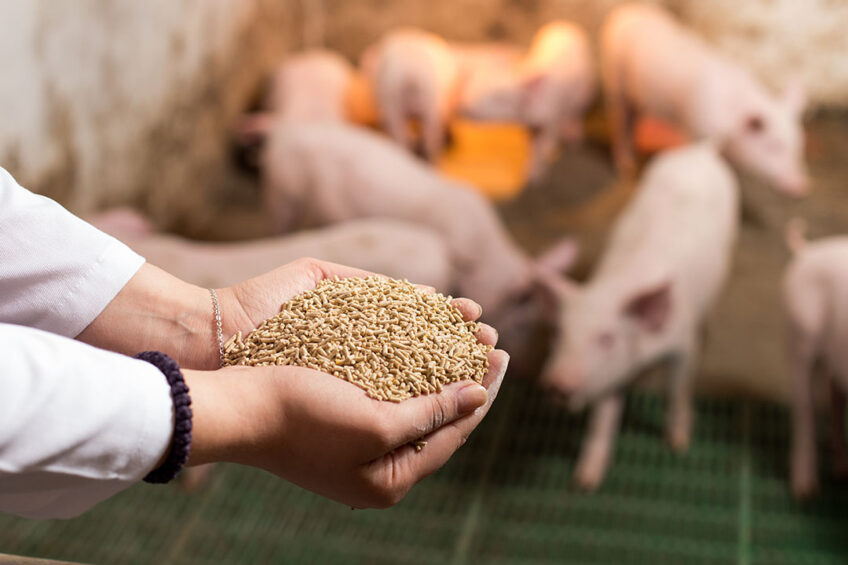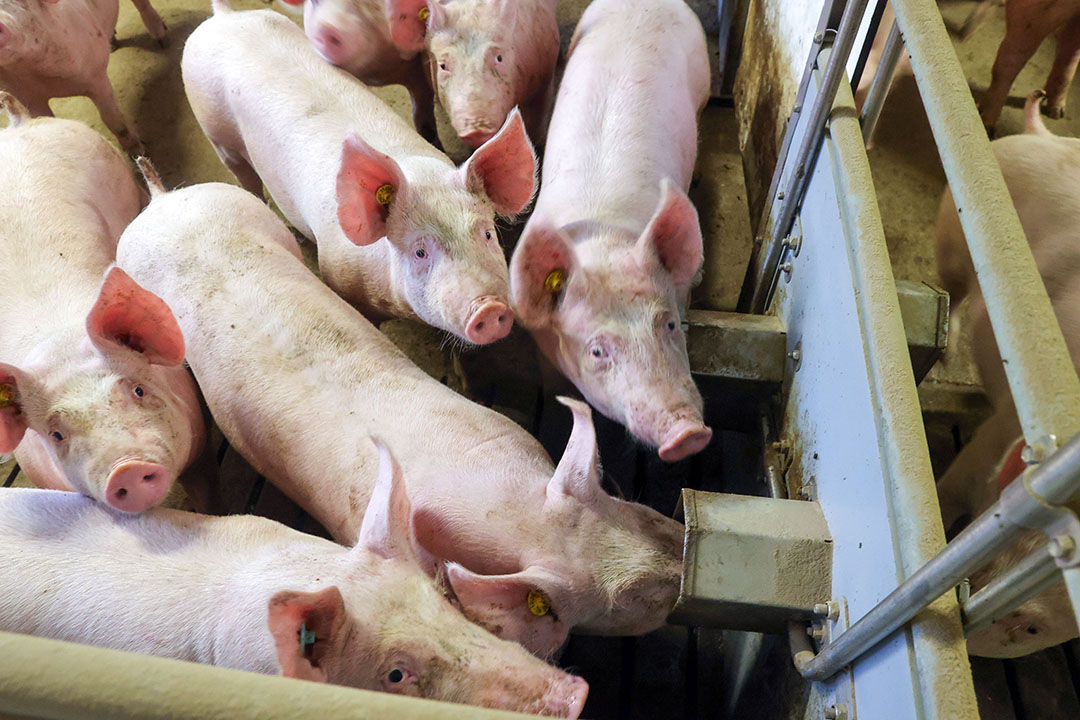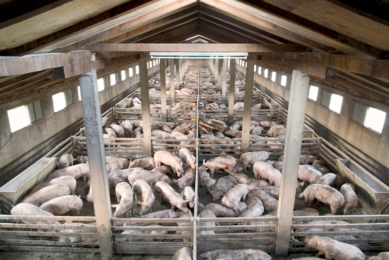Particle size and its effect on gut health

Particle size is an important factor that determines feed efficiency and gut health in pigs. Feed processing therefore needs to evolve, with an increased focus on the complex interaction between pellet characteristics, gut health and microbiota.
Advances in genetics have produced commercial strains of pigs with improved performance (growth, reproduction, etc.) based on minimal feed input. The nutrition for these animals has also evolved over time to achieve and sustain their genetic potential. Examples of advances in monogastric nutrition include the widespread adoption of net energy, ideal ratios of standardised ileal digestible amino acids and digestible phosphorous concepts, enabling nutritionists to formulate cost-effective optimal diets. There is also increased interest in the interaction between feed processing and gut health in animals. A healthy gut is very important when raising pigs sustainably and profitably, with limited use of antibiotics.

The role of feed processing
Today, most pig feeds are manufactured by using a combination of technologies, including physical grinding with hammer and/or roller mills in conjunction with hydrothermal processing including pelleting, expansion or extrusion. Pelleting is the most prevalent hydrothermal method for manufacturing pig diets. During the pelleting process, the feed is passed through steam, which softens the feed particles before they are pressed through the die by the rolls in the pellet press, causing an additional grinding effect.
It is well recognised that processing parameters such as the extent of particle modification, processing temperature, pressure, duration and water determine the physical and chemical reactions in and between nutrients as well as the adhesive properties on the feed particle surfaces, the final physicochemical structure and the hygiene status of the feed. Those attributes can directly and indirectly influence the impact of the processed feed on the digestive tract ecology and thus animal health, performance and feed cost. Some of the studies that examined the link between processed feed and health effects are listed in Table 1. Effects of smaller particle size include increased stomach ulceration in pigs.
The effect of particle size
Grinding makes it possible to create different particle sizes. Particle characteristics, particularly size, are one of the most controversial issues in pig (and poultry) nutrition. From an economic point of view, optimal particle size distribution adapted to the physiological needs of the animal enables optimal utilisation of nutrients and enhances animal performance. Numerous reports show the effects of cereal feed particle size on pigs (Table 2).
Pigs fed a coarse diet have heavier stomachs than pigs fed a fine diet, which probably reflects the fact that coarse diets require more muscular action for processing by the stomach than fine diets. Feed particle size was also shown to impact the large intestine. Studies have demonstrated that coarse diets were strongly associated with higher propionic and butyric acid levels in the caecum and colon contents. It is possible that coarse feed particle size may promote an increase in bacteria populations producing short-chain fatty acids (SCFAs) and, thus, contribute to gastrointestinal health by preventing the proliferation and/or virulence of harmful bacteria such as Salmonella species and Escherichia coli.
Reducing quantity of fine particles
Studies have demonstrated that change in feed presentation could be associated with microbiota modification (different composition and/or metabolic activities) in the gastrointestinal tract of pigs. According to data in the literature, reducing the quantity of fine particles in pig feed is strongly recommended. Generally, based on existing literature the quantity of finer particles (<0.4 mm) should be as low as possible due to the negative effect on gastrointestinal tract health, and the quantity of the coarsest fractions (>1.6 mm) should also be low due to reduced nutrient utilisation. The proportion of medium-sized particles (>0.5 to <1.6 mm), which are considered optimal for the pig’s digestive system, should be as high as possible.
Benefits are beyond doubt
The benefits of feed processing in terms of animal performance and economics are beyond doubt. However, with evolving pig production practices, the regimens for feed processing will no longer be appreciated only in terms of optimising nutrient utilisation, but also in terms of their impact on feed hygienic status, the efficacy of feed additives, animal health and food safety. Feed processing should take into consideration an increasing focus on dietary approaches (ingredients and physical characteristics) for maintaining a healthy and functional gastrointestinal tract.
Understanding the mechanisms involved in the complex interactions between the diet, intestinal microbiota and intestinal tissue can assist in supporting gastrointestinal tract function and health via targeted modifications of the diet. Optimal particle size could be designed in the grinding process using a roller or hammer mill.
However, since most pigs are fed diets subjected to hydrothermal processing, additional reduction of feed particle size is inevitable. Because fine grinding is generally favoured for high pellet quality, and because it is difficult to avoid further reduction in feed particle size during the pelleting process, fine particle size will almost inevitably be found in pelleted feeds.
Modified extrusion process
The options to reduce the intensity of grinding of particles during pelleting, by varying the parameters of the pelleting process, are very limited. A modified extrusion process (i.e. processing using an expander) followed by a shaping element as applied in the pet industry could be an alternative for pelleting to preserve particle size. Strategies such as adding concentrated fibrous material may be more suitable in pelleted feed, but data are largely lacking as to its applicability in practical diets.
This article is edited from the original paper: Role of Feed Processing on Gut Health and Function in Pigs and Poultry: Conundrum of Optimal Particle Size and Hydrothermal Regimens, published in Frontiers in Veterinary Science (2019,6:19).











